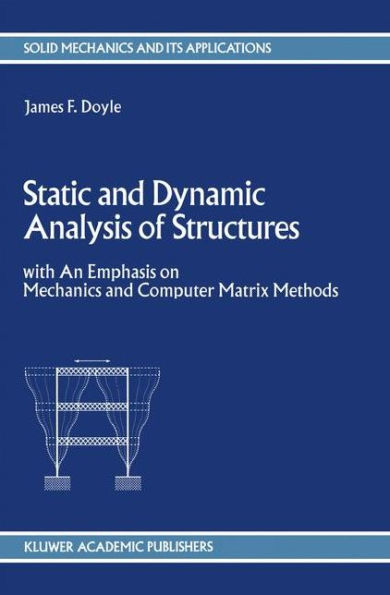5
1
9780792312086



Static and Dynamic Analysis of Structures: with An Emphasis on Mechanics and Computer Matrix Methods / Edition 1 available in Hardcover, Paperback

Static and Dynamic Analysis of Structures: with An Emphasis on Mechanics and Computer Matrix Methods / Edition 1
- ISBN-10:
- 0792312082
- ISBN-13:
- 9780792312086
- Pub. Date:
- 07/31/1991
- Publisher:
- Springer Netherlands
- ISBN-10:
- 0792312082
- ISBN-13:
- 9780792312086
- Pub. Date:
- 07/31/1991
- Publisher:
- Springer Netherlands

Static and Dynamic Analysis of Structures: with An Emphasis on Mechanics and Computer Matrix Methods / Edition 1
$219.99
219.99
In Stock

Product Details
| ISBN-13: | 9780792312086 |
|---|---|
| Publisher: | Springer Netherlands |
| Publication date: | 07/31/1991 |
| Series: | Solid Mechanics and Its Applications , #6 |
| Edition description: | Softcover reprint of the original 1st ed. 1991 |
| Pages: | 442 |
| Product dimensions: | 6.10(w) x 9.25(h) x 0.35(d) |
From the B&N Reads Blog
